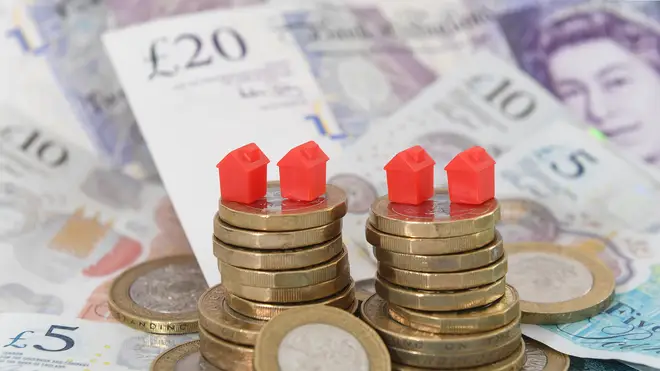
Jim Diamond 1am - 4am
20 November 2020, 12:34

There was a 27% increase in the amount of stamp duty generated between July and September compared with the previous quarter.
Some £1.9 billion was raised from stamp duty between July and September, according to tax officials, marking a 27% increase compared with the previous three months as lockdown restrictions eased.
The total was still down by 40% compared with the third quarter of 2019, when stamp duty receipts totalled £3.1 billion, the figures released by HM Revenue and Customs (HMRC) showed.
Stamp duty applies in England and Northern Ireland.
On July 8, Chancellor Rishi Sunak raised the “nil rate” stamp duty band to £500,000.
The stamp duty holiday applies until March 31 2021.
Within the latest quarterly total, around £1.3 billion-worth of stamp duty receipts were from sales of homes – rather than non-residential sales involving commercial properties or agricultural land, for example.
HMRC said residential property transactions in the third quarter of 2020 were 72% higher than in the previous three months and 18% lower than in the third quarter of 2019.
Several house price studies have recently shown a jump in housing market activity and house prices.
Price increases are said to have been fuelled by pent-up demand after sales were put on pause earlier this year, as well as the stamp duty cut.
Office for National Statistics (ONS) figures showed this week that the average UK house price reached a record high of £245,000 in September, after jumping by 4.7% over the year.
The typical London house price also hit a record high of £496,000 in September, the ONS said.
Andy Sommerville, director at property data firm Search Acumen, said: “Although the stamp duty threshold has been raised, meaning fewer properties are being caught by the tax, high levels of buyer activity have maintained a healthy stream of receipts for the Government.”
He said sharp rises in house prices since the reopening of the property market have partially offset the reduction in lower valued properties liable for stamp duty.
Mr Sommerville continued: “Upward pressure on prices for properties that were priced below £500,000 before the adjustment has pushed them above the new threshold.
“Properties valued around the £500,000 mark are often larger and have access to green space – especially outside of cities. These types of homes are experiencing a sharp inflow in buyer interest, largely driven by the rapid adoption of remote working and shifts in work life balances prompting consumers to reassess their housing needs.
“Overall, price rises are also topping up the Government’s tax take from SDLT (stamp duty land tax).”
Rob Barnard, director of intermediaries at Masthaven, said: “Undoubtedly, the revitalisation of the housing sector can be largely attributed to home buyers looking to take advantage of the stamp duty holiday.
“However, with the deadline for stamp duty break fast approaching, it’s vital for people looking to move home to act now if they want to benefit from the initiative.”
Nick Leeming, chairman of estate agents Jackson-Stops, said: “With transactions taking an average of three months across the UK, we are only just starting to see the impact of the Government policy in official data.”
He added: “The Government’s SDLT holiday has been critical in keeping the economy moving.”